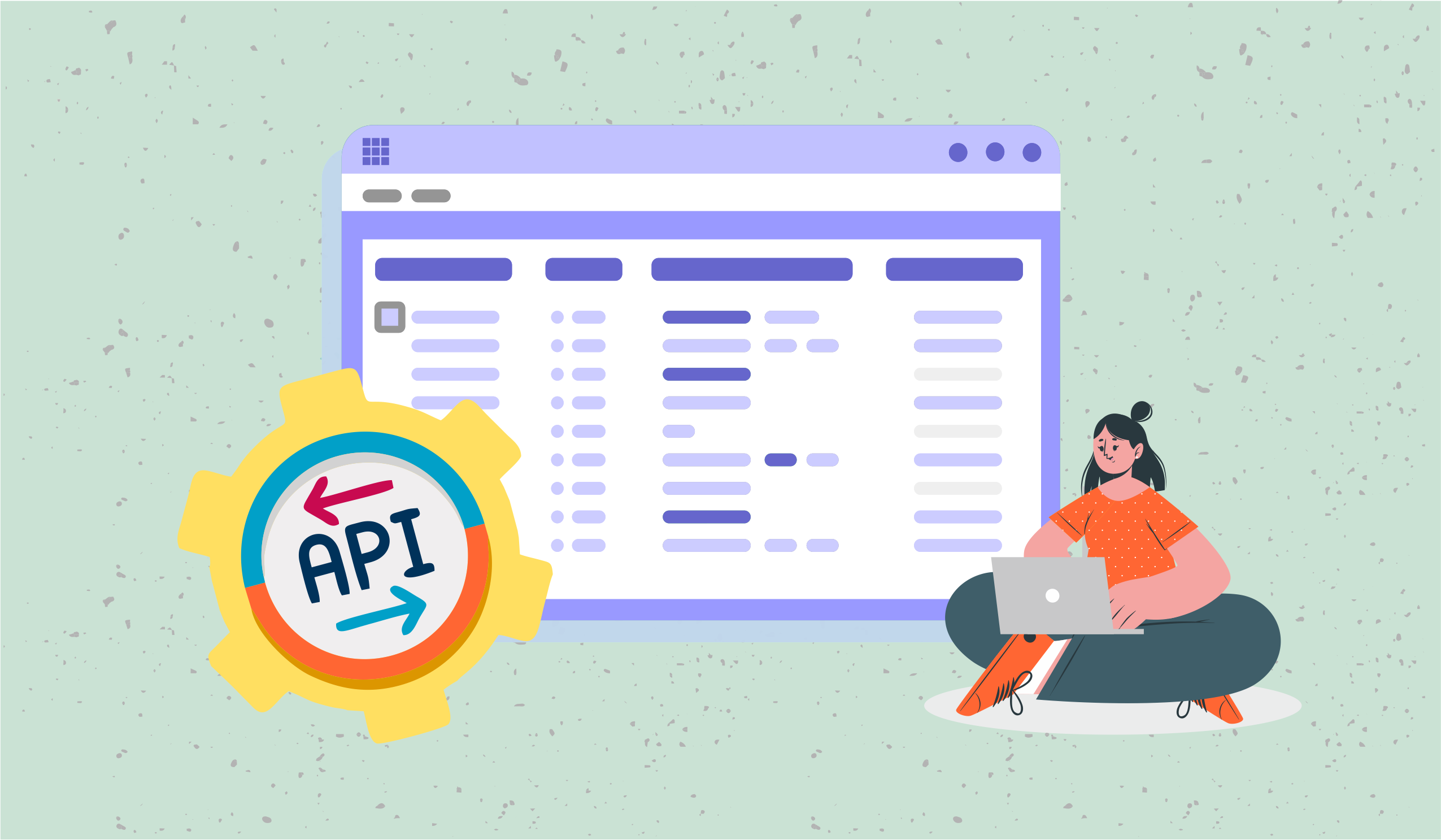Project Schedule Management: A Complete Guide 2025
Master the art of project schedule management with our comprehensive 2024 guide. Discover expert strategies, tools, and best practices to ensure your projects stay on track and meet deadlines effectively.

Project schedule management is the process of creating, maintaining, and controlling a project's timeline. It's about more than just setting deadlines; it's about orchestrating all the moving parts of a project to ensure smooth execution from start to finish.
In 2025, with the rise of remote work, global teams, and increasingly complex projects, mastering schedule management is essential. This guide will walk you through the key components, processes, and best practices of project schedule management, with a focus on how modern tools like Stackby can streamline your scheduling efforts.
Key Components of Project Schedule Management
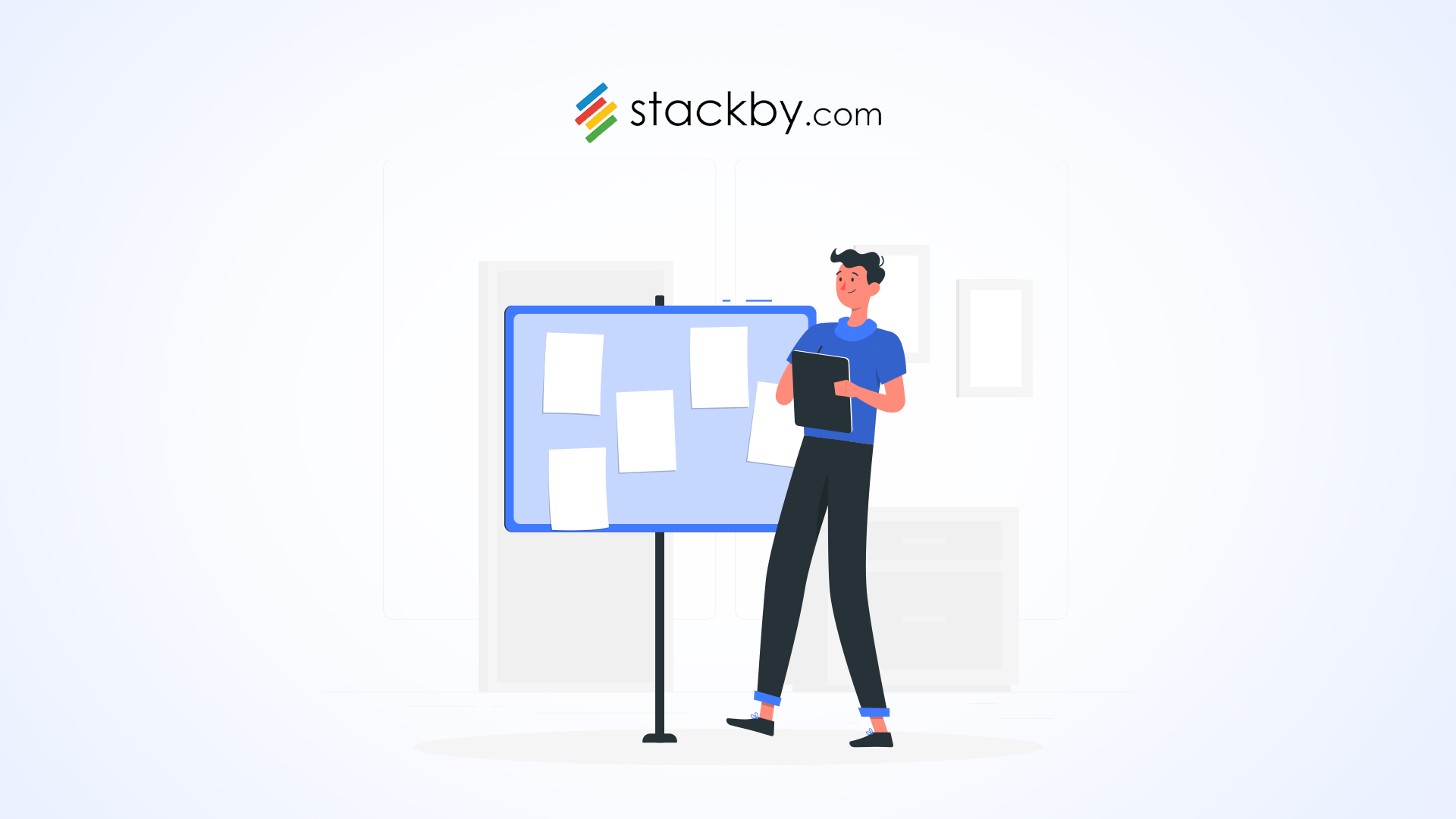
Effective project schedule management comprises several crucial elements:
- Activity definition: Identifying and documenting the specific actions needed to produce project deliverables.
- Sequencing activities: Determining the logical order of work to maximize efficiency.
- Resource estimation: Assessing the type and quantity of materials, people, equipment, or supplies required for each activity.
- Duration estimation: Approximating the number of work periods needed to complete individual activities.
- Schedule development: Analyzing activity sequences, durations, resource requirements, and schedule constraints to create the project schedule.
- Schedule control: Monitoring the project's progress and managing changes to the schedule.
The Project Schedule Management Process
The Project Management Institute (PMI) outlines a seven-step process for schedule management:
- Plan Schedule Management: Establish policies, procedures, and documentation for planning, developing, managing, executing, and controlling the project schedule.
- Define Activities: Identify and document the specific actions to be performed to produce the project deliverables.
- Sequence Activities: Identify and document relationships among project activities.
- Estimate Activity Resources: Estimate the type and quantities of material, human resources, equipment, or supplies required to perform each activity. Use equipment management software to improve accuracy by providing real-time data on availability and performance.
- Estimate Activity Durations: Estimate the number of work periods needed to complete individual activities with estimated resources.
- Develop Schedule: Analyze activity sequences, durations, resource requirements, and schedule constraints to create the project schedule model.
- Control Schedule: Monitor the status of project activities to update project progress and manage changes to the schedule baseline.
In Stackby, you can implement this process using custom templates that guide you through each step, ensuring nothing is overlooked.
Popular Project Scheduling Techniques in 2025
As project complexity grows, so do the techniques for managing schedules. Here are some popular methods used in 2025:
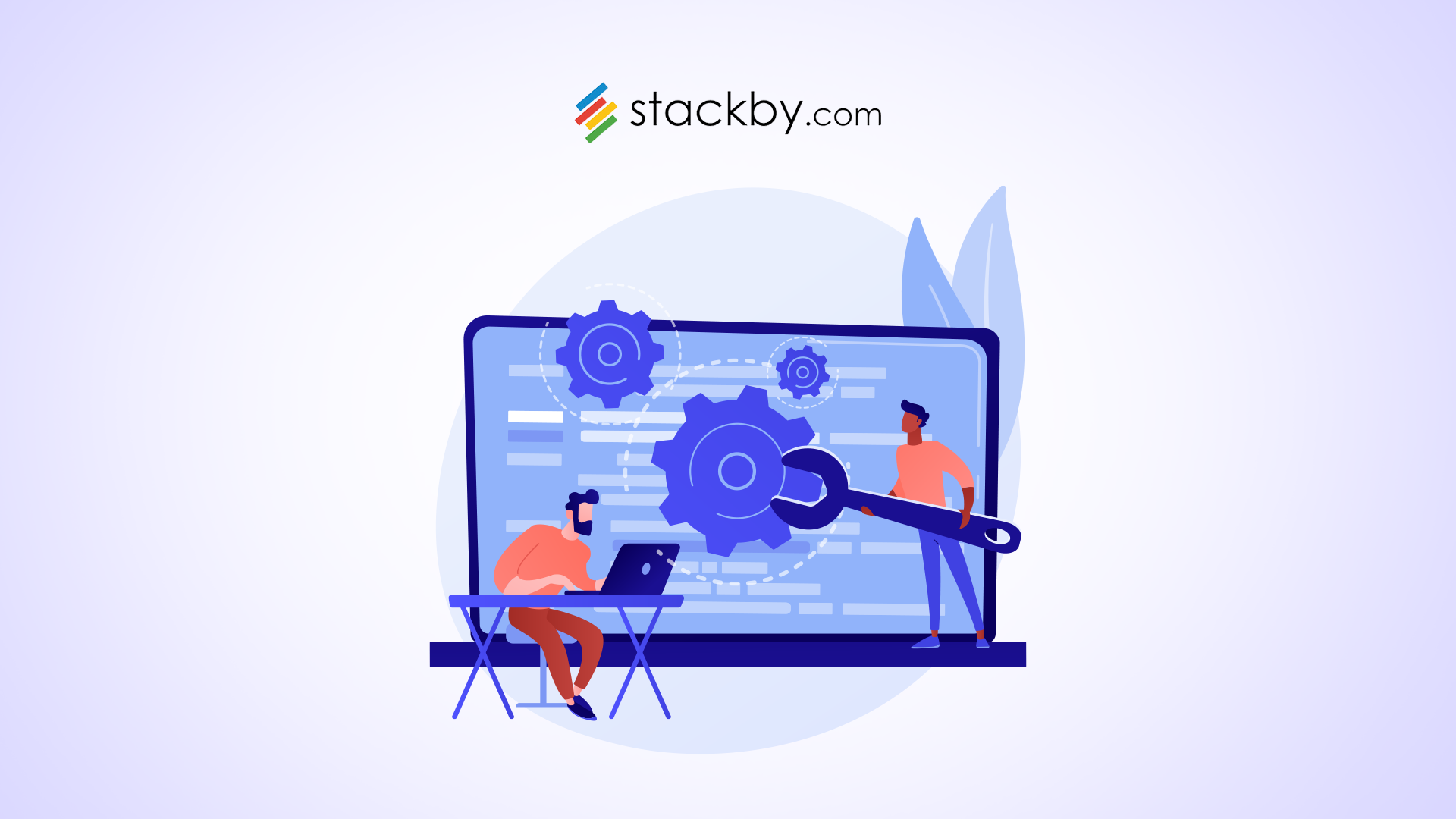
- Critical Path Method (CPM): Identifies the longest sequence of dependent tasks in a project, helping managers focus on critical activities.
- Program Evaluation and Review Technique (PERT): Uses a weighted average of optimistic, pessimistic, and most likely time estimates for more accurate scheduling.
- Critical Chain Method: Focuses on resource management, adding buffers to protect against uncertainty and resource constraints.
- Agile Sprint Planning: Breaks the project into short, time-boxed iterations, allowing for flexibility and rapid response to changes.
- Resource Levelling: Adjusts the project schedule based on resource constraints, optimizing resource allocation.
Stackby's flexible platform allows you to implement any of these techniques, with customisable views to visualize your schedule in the most effective way for your team.
5 Tools and Software for Project Schedule Management
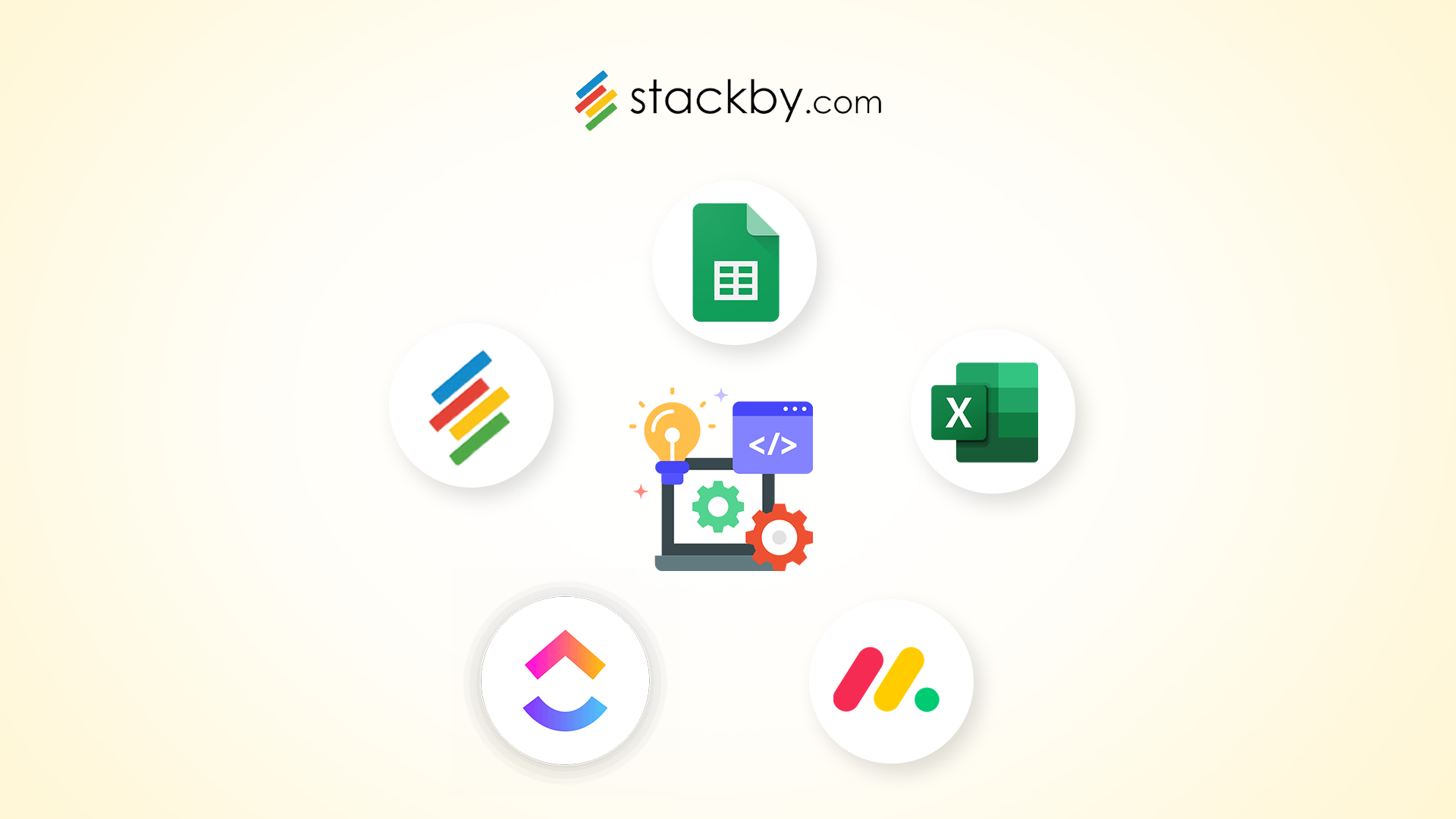
While traditional tools like spreadsheets can work for simple projects, today's complex projects demand more sophisticated solutions. Project management software has become indispensable for effective schedule management.
Stackby stands out in this arena by offering a unique blend of spreadsheet-like flexibility and powerful database functionalities. Unlike rigid traditional project management tools, Stackby allows you to create custom workflows that fit your specific scheduling needs.
For instance, you can easily set up a Gantt chart view for timeline visualization, a Kanban board for task management, and custom dashboards for real-time schedule tracking — all within the same platform. This versatility makes Stackby an excellent choice for teams looking for a balance between structure and flexibility in their scheduling tools.
1. Stackby : Database Management Platform
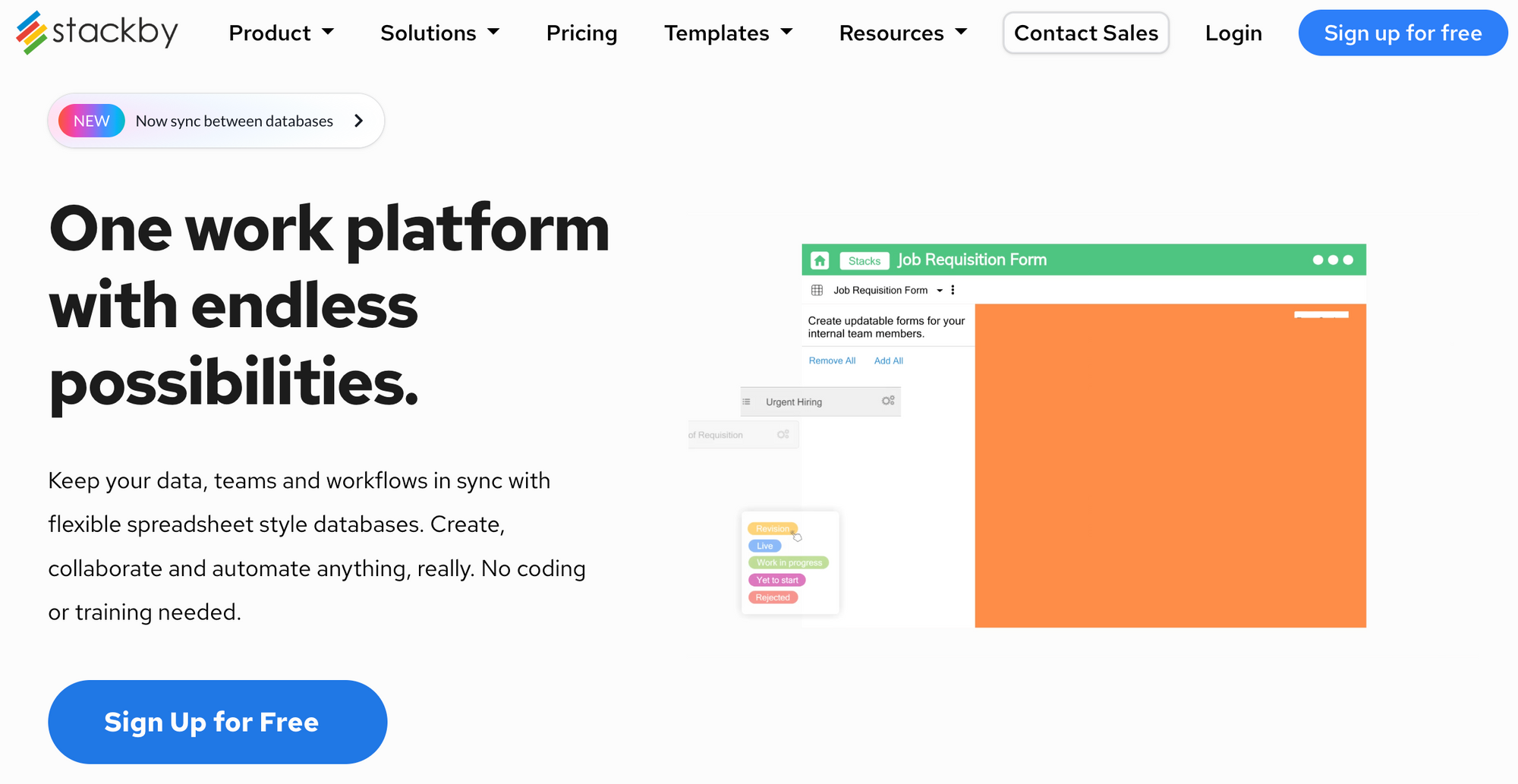
Stackby is a versatile no-code platform that combines the familiarity of spreadsheets with the power of databases and project management tools. It's designed to be flexible and customizable, making it suitable for various project scheduling needs.
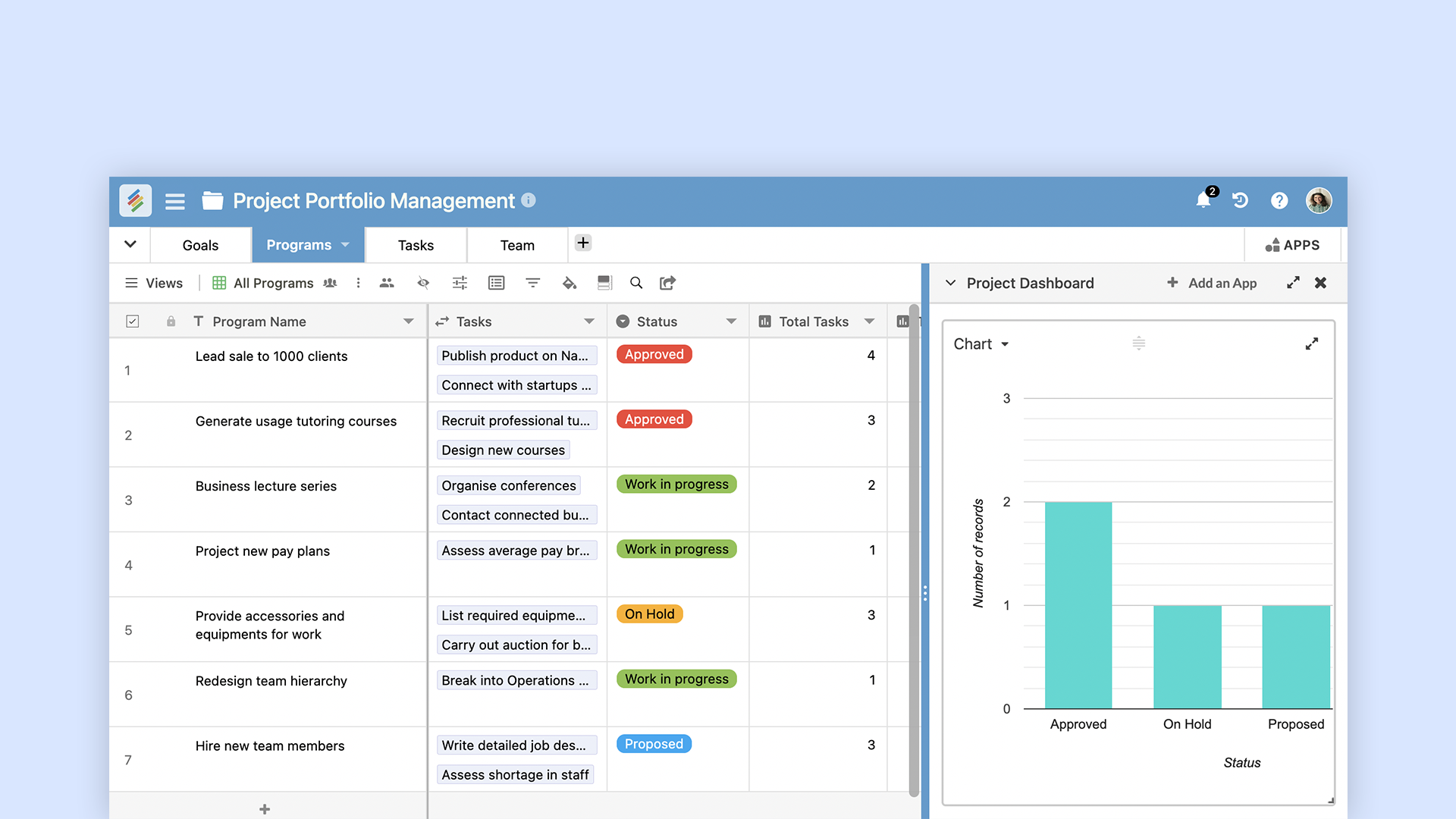
Stackby Best Features
- Customizable templates for different project management approaches
- Multiple views including Gantt charts, Kanban boards, and calendars
- API integrations with popular tools and services
- Real-time collaboration features
- Automation capabilities for routine tasks
Stackby Limitations
- Learning curve for users accustomed to traditional project management software
- Some advanced features may require higher-tier plans.
Stackby Pricing
Stackby offers a free plan for small teams, with paid plans starting at $5/user/month when billed annually. They also have a limited time offer for annual plans, starting at $149 annual for 3 users for Economy and $299 annual for 3 users for Business plan.
2. Monday.com
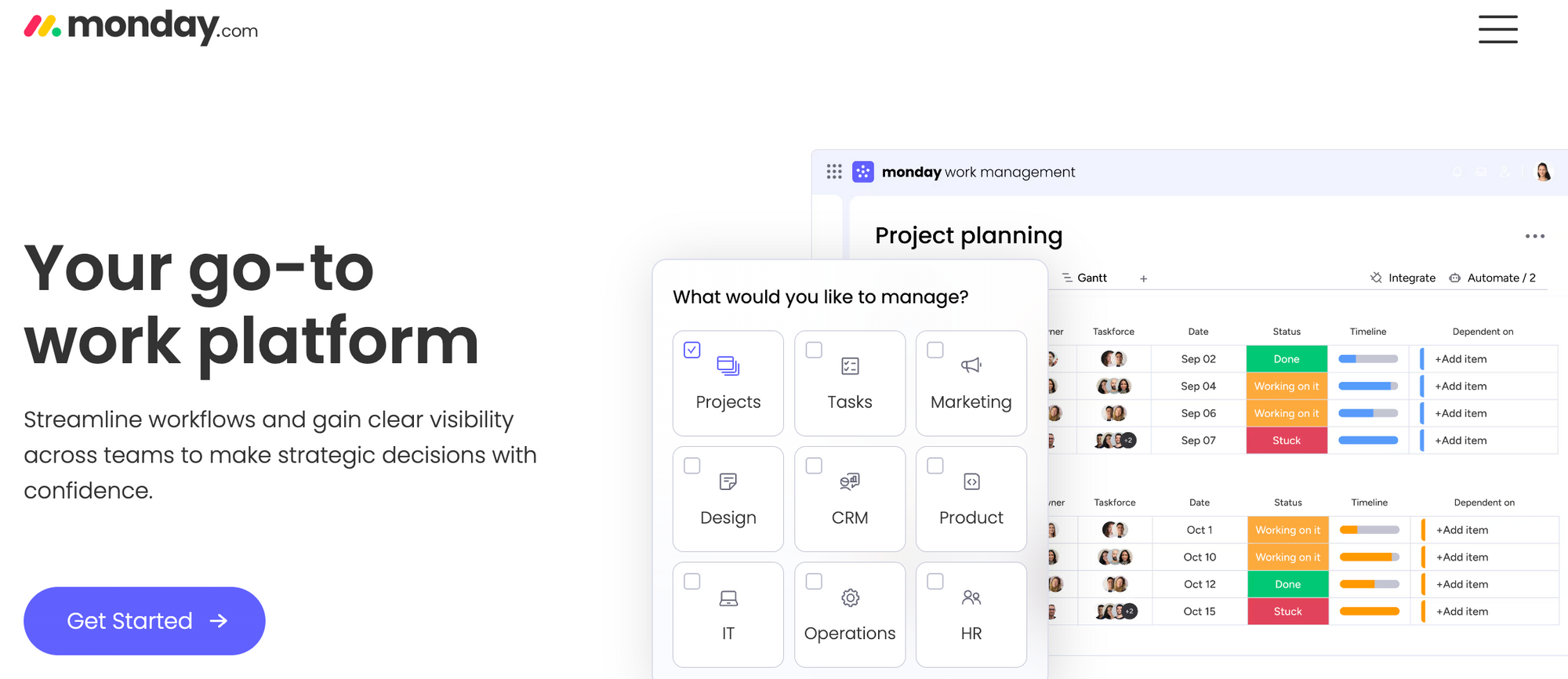
Monday.com is a work operating system (Work OS) that allows teams to build custom workflow apps in minutes to run their processes, projects, and everyday work.
Monday.com Best Features
- Intuitive, visually appealing interface
- Customizable workflows and automations
- Extensive integration capabilities
- Time tracking features
- Multiple project views including Gantt charts
Monday.com Limitations
- Can become costly for larger teams
- Some users report a steep learning curve for advanced features
Monday.com Pricing
Monday.com's pricing starts at $8/user/month for the Basic plan when billed annually, with a minimum of 3 users.
Read more: Top 10 Alternatives to Monday.com
3. ClickUp
ClickUp is a cloud-based collaboration and project management tool suitable for businesses of all sizes and industries.
ClickUp Best Features
- Comprehensive suite of project management tools
- Customizable views and workflows
- Built-in time tracking and reporting
- Extensive list of native integrations
- AI-powered features for task management
ClickUp Limitations
- The abundance of features can be overwhelming for new users
- Some users report occasional performance issues with larger projects
ClickUp Pricing
ClickUp offers a free forever plan, with paid plans starting at $5/user/month when billed annually.
15 Best ClickUp Alternatives for Better Project Management
4. Google Sheets
Google Sheets is a web-based spreadsheet program that's part of Google's free, web-based Google Docs Editors suite.
Google Sheets Best Features
- Free to use with a Google account
- Real-time collaboration
- Familiar spreadsheet interface
- Extensive library of add-ons for enhanced functionality
- Easily shareable and accessible from any device
Google Sheets Limitations
- Limited project management-specific features
- Can become unwieldy for large, complex projects
- Lacks built-in Gantt chart functionality (though available through add-ons)
Google Sheets Pricing Google Sheets is free for personal use. Business versions are available as part of Google Workspace, starting at $6/user/month.
Top 10 Free Google Sheets Alternatives To Try Your Project to Manage Workflow Easy
5. Microsoft Excel
Microsoft Excel is a spreadsheet program developed by Microsoft, part of the Microsoft Office suite of productivity tools.
Microsoft Excel Best Features
- Powerful data analysis and visualization capabilities
- Extensive formula library for complex calculations
- Macro and VBA support for automation
- Wide range of templates available
- Familiar interface for many users
Microsoft Excel Limitations
- Lacks built-in project management features
- Can be complex for non-technical users
- Limited real-time collaboration in desktop version
- Can be prone to errors with large, complex projects
Microsoft Excel Pricing
Excel is available as part of Microsoft 365, with plans starting at $6.99/month for personal use. Business plans start at $6/user/month when billed annually.
Top 12 Microsoft Office Excel Alternatives for Power-Packed Productivity
Best Practices for Effective Project Schedule Management
To maximize the effectiveness of your project scheduling efforts:
- Involve stakeholders in schedule development: This ensures buy-in and more accurate estimations.
- Use historical data for accurate estimations: Past project data can provide valuable insights for future planning.
- Build in buffers and contingencies: Account for uncertainties and potential risks in your schedule.
- Regularly update and communicate schedule changes: Keep all stakeholders informed of progress and any adjustments.
- Leverage automation and AI for schedule optimization: Use tools like Stackby that offer automated updates and intelligent scheduling suggestions.
Common Challenges in Project Schedule Management and How to Overcome Them
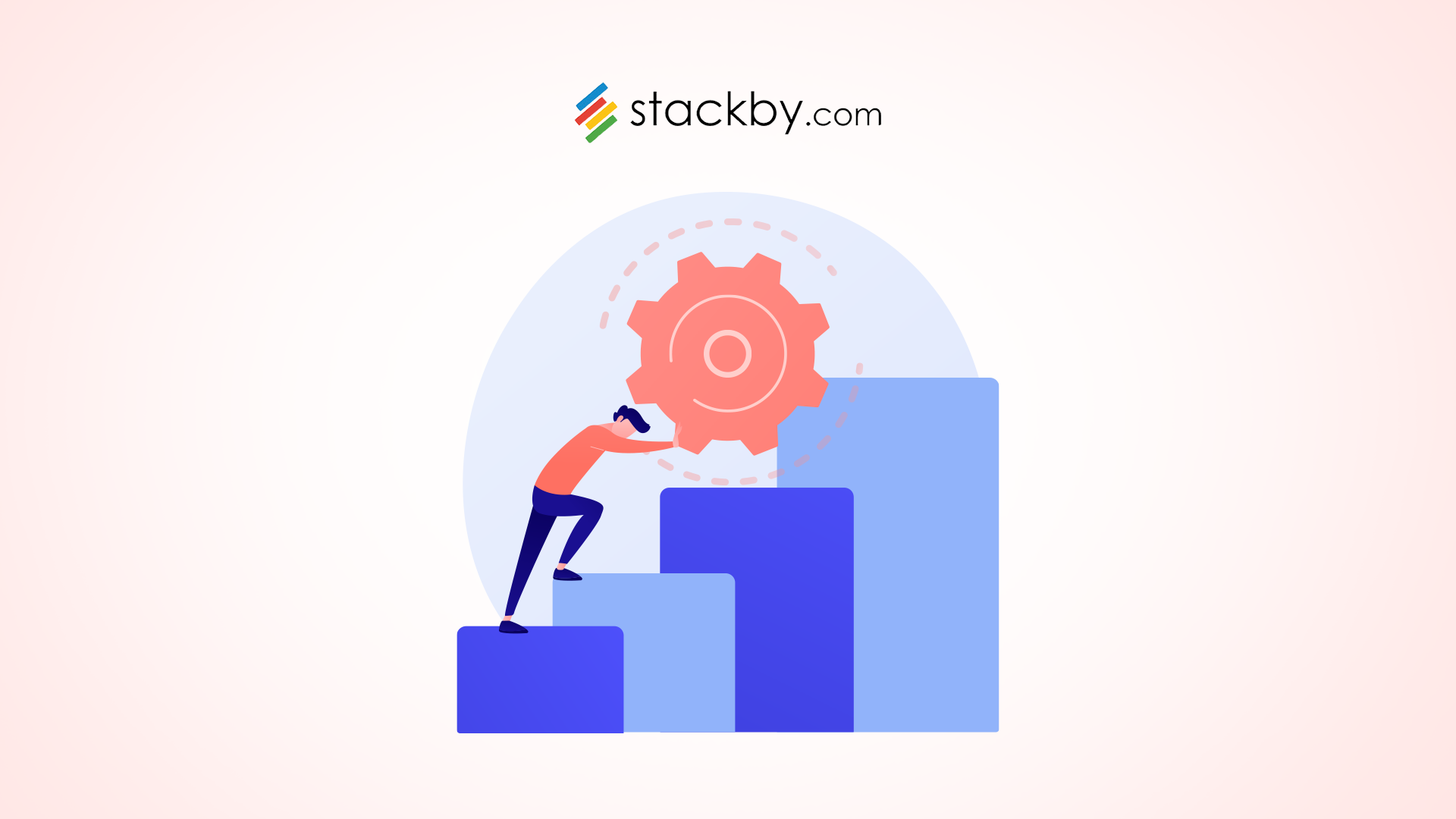
Even with the best practices in place, challenges can arise. Here's how to address some common issues:
- Dealing with scope creep: Clearly define project boundaries and use change management processes. Stackby's customizable forms can help standardize change requests.
- Managing resource conflicts: Use resource leveling techniques and Stackby's resource allocation features to visualize and resolve conflicts.
- Handling unexpected delays: Build buffer time into your schedule and use Stackby's real-time updates to quickly adjust when delays occur.
- Balancing multiple projects: Utilize Stackby's multi-project view to manage resources and timelines across various projects simultaneously.
- Adapting to remote work schedules: Leverage Stackby's cloud-based platform for real-time collaboration and schedule updates, regardless of team location.
The Role of Stackby in Modern Project Schedule Management
Stackby brings several advantages to project schedule management:
- Dynamic Gantt charts: Visualize your project timeline and easily make adjustments as needed.
- Resource allocation and tracking: Assign tasks to team members and track their workload across projects.
- Automated timeline updates: As tasks are completed, Stackby can automatically update your project timeline.
- 50+ API & 5k+ App Integration: Connect Stackby with your existing tools for seamless data flow and comprehensive project management.
- Customizable views: Create different views of your schedule for various stakeholders, from high-level overviews to detailed task lists.
Case Study: Successful Project Schedule Management with Stackby
Let's look at how a mid-sized software development company, Tech-Innovate, used Stackby to overcome their scheduling challenges:
Tech-Innovate was struggling with managing multiple projects simultaneously, often resulting in missed deadlines and resource conflicts. By implementing Stackby, they were able to:
- Create a centralized project schedule dashboard, giving management a bird's-eye view of all ongoing projects.
- Use custom forms for task creation, ensuring all necessary information was captured upfront.
- Implement a Kanban board for their Agile sprints, integrated with the overall project Gantt chart.
- Set up automated notifications for upcoming deadlines and potential schedule conflicts.
As a result, Tech Innovate saw a 30% reduction in missed deadlines and a 25% improvement in resource utilization within the first six months of using Stackby.
Future Trends in Project Schedule Management
As we look ahead, several trends are shaping the future of project schedule management:
- AI and machine learning in schedule optimization: Expect to see more tools offering intelligent scheduling suggestions based on historical data and project parameters.
- Integration of IoT data for real-time updates: As the Internet of Things expands, project schedules will be updated in real-time based on actual progress data from connected devices.
- Increased focus on risk management in scheduling: Tools will incorporate more sophisticated risk analysis features to help project managers create more resilient schedules.
- Enhanced collaboration features for remote teams: With remote work here to stay, scheduling tools will continue to evolve to support distributed teams better.
- Predictive analytics for proactive schedule management: Advanced analytics will help project managers identify potential schedule issues before they occur.
Stackby is at the forefront of these trends, continuously updating its features to meet the evolving needs of project managers.
How to Get Started with Project Schedule Management in Stackby
Ready to elevate your project scheduling game with Stackby? Here's a quick guide to get you started:
- Set up your project: Create a new stack in Stackby and choose from pre-built project management templates or start from scratch.
- Define your tasks: Use Stackby's customizable forms to input all your project tasks, including descriptions, assignees, and estimated durations.
- Create your timeline: Utilize the Gantt chart view to visualize your project timeline and set dependencies between tasks.
- Allocate resources: Assign team members to tasks and use the resource view to ensure balanced workloads.
- Set up automations: Configure notifications for upcoming deadlines and automate status updates as tasks progress.
- Monitor and adjust: Regularly review your project dashboard, make necessary adjustments, and use Stackby's reporting features to keep stakeholders informed.
Conclusion
Effective project schedule management is more critical than ever in the dynamic business environment of 2025. By understanding the key components, processes, and best practices outlined in this guide, and leveraging powerful tools like Stackby, you can significantly improve your project's chances of success.
Remember, the key to successful schedule management lies in flexibility, communication, and the right tools. Stackby offers the versatility and power needed to handle complex project schedules while maintaining the ease of use that teams love.
Why not give Stackby a try for your next project? With its customizable templates, powerful automation features, and intuitive interface, you might just find it's the project scheduling solution you've been looking for.

![Step by Step Guide on How to Build Forms in a Database [2025]](/blog/content/images/2022/03/form-database-blog.png)

